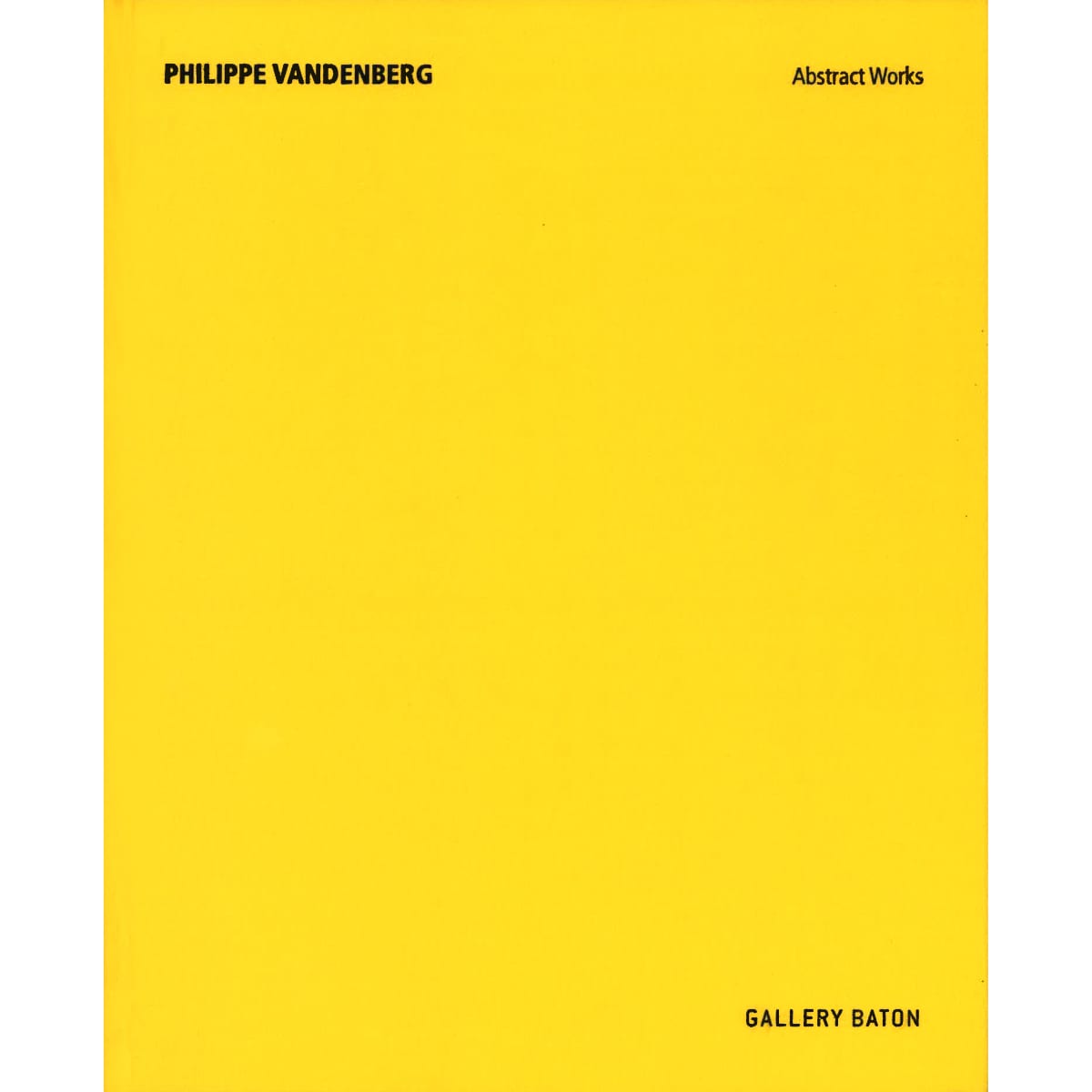Philippe Vandenberg: Abstract Works
Gallery Baton is pleased to announce Philippe Vandenberg (1952–2009, Belgium)’s solo exhibition Abstract Works from 27th April to 28th May.
Philippe Vandenberg explored the manner in which mankind’s spiritual inheritance reflected his own internal mentality on the basis of lifelong understanding and original contemplation of literature and philosophy. By employing painterly elements, he concentrated on presenting a chain of processes in which the external intellectual stimulations formed and altered his emotion. Vandenberg was one of the representative artists who witnessed and led the rise of Neo-expressionism in Belgium and other cities of Europe. In the mid 90’s, he proceeded to be occupied with meta-discourses such as Life and Death, Material and Mind, and Emotion and its reflections and accordingly he showed a series of works that emphasized on a sense of abstraction. This solo show will reveal his late abstract pieces, which are drastically influenced by his personal experiences and introspection.
Formative characteristics constantly exposed in Vandenberg’s late abstract works are the rough treatment of materials, dependent on traces of physical movements, developed layers and manifested fierce reflections of an intuitive and subjective sentiment on two-dimensional surfaces. These abstract outcomes had a declaratory meaning demonstrating the end of a certain stage rather than carrying a sense of completion; they clearly explained that a predominant theme which the artist investigated in this period was a study of the shifts in the artist’s private sensibility.
For Vandenberg, the act of painting was significant since it triggered spectators’ impulse to ruminate upon their inner worlds/thoughts (sides) by encountering his artworks instead of demanding implicit agreements on his intention for the works. The artist believed that artworks that underline their abstractness which were less constrained by representing objects were more likely to provide subjective and extreme personal inspiration for an audience. Ultimately, it paralleled his lifetime philosophy that artists must cling to being vitally personal.
“Painting contains the artist’s pain. Agony, suspicion, panic and fear that you might not satisfy the canvas... therefore I paint failure out of failure, and paint expectation out of expectation.”
He recognized not only long standing customs and traditions but his faith and convictions, which he had adhered to for a long period of time, as targets that he had to overcome and resist. This artistic anguish was made manifest (visualized) as a painting methodology which overlaid newly formed psychological and emotional properties onto works completed in the past. This mode of repainting, often found in this period, is reminiscent of a certain struggle, in that the artist constantly criticized himself and pursued the utmost result. Moreover the layers of paint densely stacked recollects wild primeval organisms and brings to mind growth rings that disclose the artist’s long-term agony. In addition, simple lines, symbols and sentences toughly unfolded on canvas were the main subjects that the artist indulged in. It is interesting that the two-dimensional arranged lines and signs contain some patterns and directive, which were analyzed as a symbolic representation, implying thoughts and sensations about what fascinated the artist. They were instantly being read in spite of their minimal appearances.
Philippe Vandenberg graduated with a degree in Literature and History of Art from Royal Academy of Fine Arts, Ghent, Belgium. When he opened his first solo exhibition in New York in 1986 he had already built a strong career with its centre in Europe. He emerged as a leading contemporary artist from Belgium as his work became included in the Guggenheim Museum collection. Furthermore he had many exhibitions in major international galleries and museums such as S.M.A.K, Belgium in 1995, MuHKA, Belgium in 1999, De Pont Museum in 2012 and Hauser & Wirth, Zurich, London.
This exhibition is arranged through cooperation with Hauser & Wirth and also a collaborative curation with Koen van den Broek who is an artist represented by Gallery Baton.

